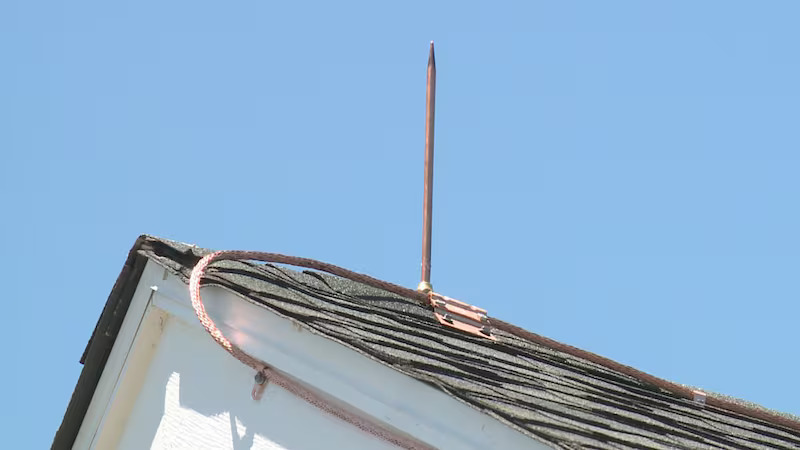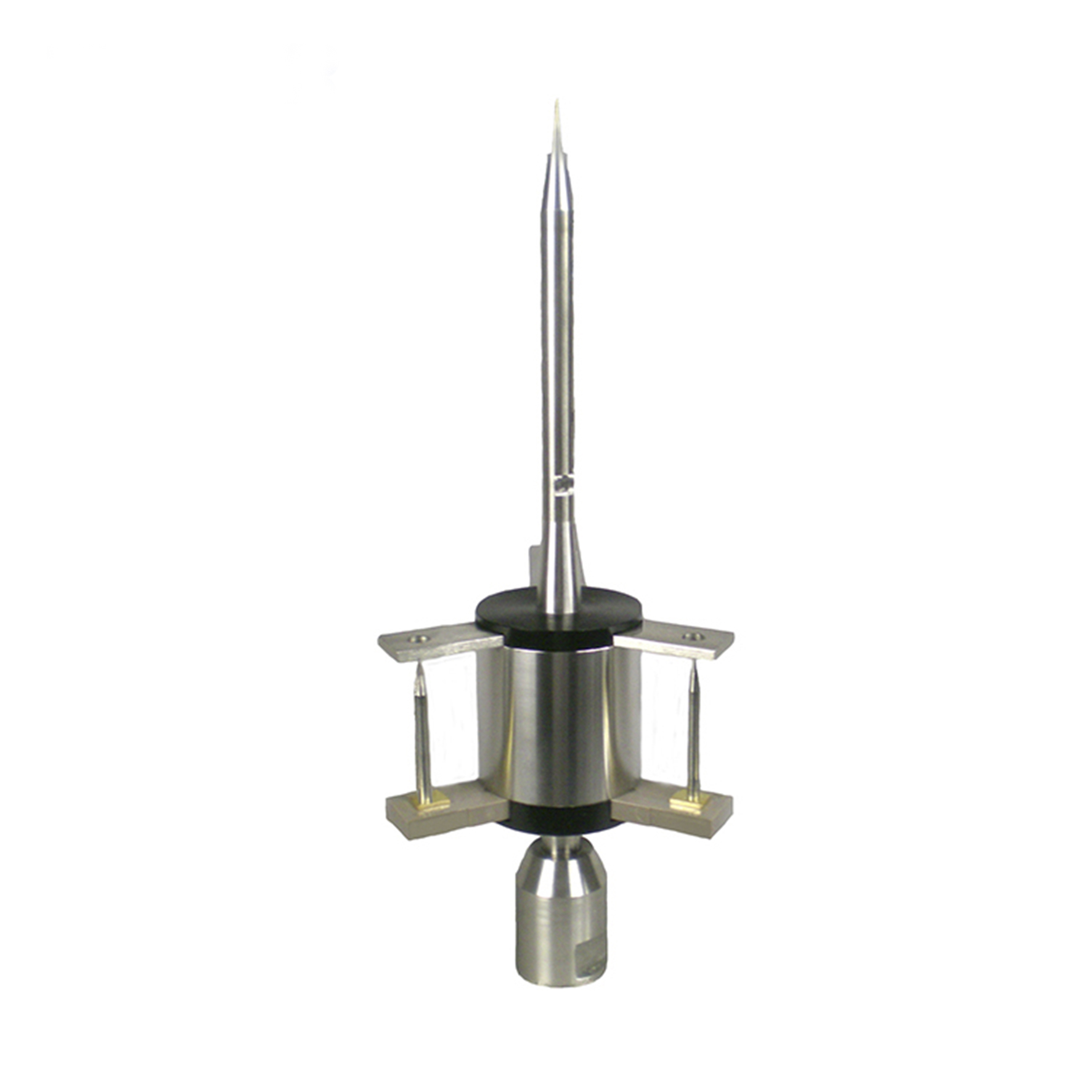In the absence of compliance with regulations and technical requirements, the lightning rod shall not be installed by itself. In China, lightning rods must be installed in buildings over 20 meters and operated by professionally qualified personnel. Use a material with good electrical conductivity, the diameter of the material is greater than 8mm(copper is preferable), and the grounding resistance is less than 10 ohms. Lightning protection should be installed when installing, do not just check and protect the system frequently. The installation must be in accordance with the regulations of the Code for Design of Lightning Protection for Buildings (GB 50057). If you do not have the professional knowledge and equipment, you are advised to contact the personnel who have the appropriate electrical equipment.
The role of lightning rods
Lightning rods protect buildings in two ways: they direct strikes so that lightning currents will have a minimum chance to start fires, and the fact of accepting strikes from them prevents advances of leaders. In numbers from the U.S. National Weather Service, there are about 24 million lightning bolts worldwide every year, and over 10,000 causes injuries or deaths. As for lightning rods, they are destined to lead the current created by a direct impact of lightning into the ground, so you diminish a considerable proportion of risk related both to supply loss due to rains or your building falling apart from getting heat blasted. While lightning-caused fires make up more than 8% of all wildland wildfires annually, proper installation significantly decreases the risk to less than 1%.
The impact of lightning not only threatens the building but critical systems by affecting their internal electrical/electronic equipment. To avoid the equipment damage caused by the electromagnetic pulses generated when lightning is triggered, using a lightning rod can conveniently induce current and guide it in time with safe discharge. Hospitals and data centers are the best examples where power stability is required on a scale of extremes; in such places, using lightning rods can cut off at least 70% of risks. Lightning also kills or injures dozens of people each year in the United States. In areas with storms, using lightning rods can lessen vulnerability near buildings by more than 90%.

Feasibility of installation
To install a lightning rod, in some countries and territories, one must comply fully with the law or regulation standards. Chinese regulations on lightning protection (GB 50057 "Code for Design of Lightning Protection of Buildings") stipulate that any building over 20 meters must install a lightning rod. There must be specific lightning protection in places such as medical facilities, schools, and public buildings. In the United States, any building with combustible and explosive dangerous goods or over 18 meters high must install lightning protection facilities, with all installations by professionals. In Europe, buildings that require risk assessment include facilities considered to be at high risk of receiving a direct hit by lightning and have a height greater than 15 meters, so those in the range up to 26.3 meters would explicitly need tested protection equipment before being used as drone launchpads under EN 62305 (which assesses vulnerability from an electrical system point of view).
The design and installation of the lightning rod system require a profound understanding of complex electrical engineering principles. To effectively attract lightning, the height of the lightning rod should be 2 meters higher than the highest point of the building. The number and distribution of lightning rods will depend on the size and position of the building. As a general rule, a 1,000 square meter factory will require no less than three lightning rods. The conductor should be manufactured of good electrical-conductivity materials like copper or aluminum, with a diameter of no less than 8 mm to have an adequate conductive capacity. The resistance of the ground should be lower than 10 ohms to guarantee the lightning current can be directed to the earth. Additionally, professional equipment should be used during the installation of the lightning rod. This will include measurements, such as the ground resistance tester. As a rule of thumb, the total cost of such equipment is around $5,000 to $10,000.
Installation Precautions
Installation work is totally forbidden during thunderstorms; one needs to pick a sunny day for work and monitor the weather forecast. The installers should wear insulated gloves, helmets, and shoes to avoid direct contact with conductive materials. According to the International Labour Organization, the costs of such protective equipment should be $200–$300. As the installation of lightning rods is usually at the highest part of buildings, it will require safety ropes and a fall protection device to ensure the safety of the high-altitude workers.
The materials that you use will determine how well the lightning rod will work and how long it will last. The materials to make lightning rods and conductors have some properties like high conductivity and corrosion resistance that only certain metals, such as copper and aluminum alloys, can provide. Copper is approximately 30% more conductive than aluminum but also costs a lot more, with the market price of copper being roughly $7 per kilogram compared to just $2 for aluminum. The grounding wire is composed of galvanized steel or copper, and the resistance to ground can meet the standard requirements. The length depends on several factors, such as from 2.5 meters to 3 meters, for a good idea about it. Corrosion-resistant materials must be chosen for other components, such as connecting poles and accessories like connectors and brackets, otherwise, these parts will get spoiled in tough weather conditions (like strong winds).
What should be noted is the lightning rod system has to pass certain standards before it can be installed. Perform a risk analysis for the type of construction, use, and location of the building to determine how many lightning rods you need and where to place them. In the case of high-risk buildings (e.g., petrochemical plants or power stations), an elaborate lightning protection plan is usually necessary. This lightning rod system needs to be compatible with other electrical systems in the building so it will not create electromagnetic interference. Moreover, the proposed design should be reviewed by related units before construction to avoid breaching local laws and norms.
Lightning rods need to be thoroughly tested and maintained even after they are installed in order to maintain their efficiency long-term. Perform one ground resistance test a year to ensure it is below 10 ohms; testing costs are usually $100-$300. Inspect your lightning rods, conductors, and grounding systems frequently. If they are corroded, broken, or not tight, you have a faulty system. At the same time, keep detailed maintenance records and record findings of all tests and inspections for future reference.

